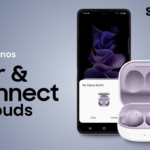Bluetooth headphones have become a staple for music enthusiasts and professionals alike, offering the convenience of wireless connectivity.
However, the experience can sometimes be marred by intermittent disconnects or audio cutouts, leading to frustration and disruption.
This guide aims to explore the common reasons behind these annoyances and provide practical solutions to ensure uninterrupted audio enjoyment.
Whether it’s interference, range limitations, or battery issues, understanding the root cause is the first step toward a seamless listening experience.
Understanding Bluetooth Technology
Bluetooth Basics
Bluetooth is a wireless communication standard designed to exchange data over short distances from fixed and mobile devices, creating personal area networks.
It operates on a radio frequency band, ensuring Bluetooth headphones connect to smartphones, computers, or tablets without wires.
This capability declutters your space from cables and allows for greater freedom of movement while listening to audio.
By pairing devices via Bluetooth, users can enjoy their favourite music, podcasts, or videos with the convenience of wireless audio transmission, resulting in a flexible and unencumbered listening experience.
Connectivity Challenges
Several factors can negatively impact Bluetooth connectivity, leading to audio problems with your headphones. Interference from other wireless devices is one of the common culprits.
Since Bluetooth operates in the 2.4 GHz frequency band, it can clash with other devices that use the same frequency, such as Wi-Fi routers, cordless phones, or microwave ovens.
Distance between the connected devices also plays a vital role; exceeding the Bluetooth range (typically up to 33 feet/10 meters for most devices) can cause the connection to drop.
Physical barriers like walls or even the human body can weaken the signal.
Low battery levels in the headphones or the source device can also lead to poor connectivity and performance issues.
Understanding these factors is crucial for troubleshooting and improving your Bluetooth headphone experience.
Common Causes of Connection Interruptions
Distance and Obstructions
One of the most straightforward reasons for disrupted Bluetooth headphone connectivity is the physical distance between the headphones and the connected device and obstructions.
Bluetooth technology typically supports a reliable connection within a range of up to 33 feet (10 meters), but this can vary based on the specific device and environment.
Signals can become weakened or interrupted by physical barriers, such as walls, doors, or even people.
These obstructions can absorb or deflect the signal, reducing its strength and consistency. In open spaces without barriers, Bluetooth connections usually perform better and over longer distances.
Understanding the limitations of distance and physical barriers can help users optimize their setup for a more stable connection.
Interference from Other Wireless Devices
Interference from other wireless devices is a significant factor that can disrupt Bluetooth connectivity.
The 2.4 GHz frequency band, where Bluetooth operates, is a crowded spectrum used by many household electronics, including Wi-Fi routers, cordless landline phones, and even microwave ovens.
When these devices are in use, they emit signals that overlap or interfere with the Bluetooth signal, leading to potential audio cutouts or disconnections.
This phenomenon, known as wireless interference, can also occur in densely populated areas where numerous devices operate simultaneously.
To mitigate such interference, consider changing the Wi-Fi router to operate on a different frequency band, like 5 GHz, or moving your Bluetooth headphones and connected devices away from other wireless electronics.
Battery Life Considerations
Battery life is a critical aspect that directly influences the performance of Bluetooth headphones.
When the battery level of your headphones approaches its lower limit, you may start experiencing inconsistent connectivity, audio dropouts, or even complete disconnection.
This isn’t solely confined to the headphones; the battery status of the source device (like your smartphone or tablet) can also impact the quality and stability of the Bluetooth connection.
Keeping your headphones and the source device adequately charged is essential to avoid these interruptions.
Modern headphones often come with battery indicators or companion apps that provide real-time battery status, making it easier to anticipate when a charge is necessary.
Additionally, investing in headphones with longer battery life or carrying a portable charger can ensure uninterrupted listening experiences during long commutes or extended use.
Bluetooth Device Limitations
Each Bluetooth device has capabilities and limitations affecting overall performance and connectivity experience.
One key factor is the Bluetooth version; newer versions typically offer speed, range, and energy efficiency improvements compared to older ones.
For example, devices equipped with Bluetooth 5.0 can communicate over longer distances and at faster rates than those using Bluetooth 4.2. Not all Bluetooth headphones also support all Bluetooth profiles, defining the services available.
For instance, the Advanced Audio Distribution Profile (A2DP) is essential for streaming high-quality audio, while the Hands-Free Profile (HFP) allows for call management.
The compatibility between the headphones and the source device’s Bluetooth versions and profiles can significantly influence the connection’s reliability and the audio’s quality.
Therefore, understanding your device’s Bluetooth capabilities and ensuring compatibility with your source devices is crucial for optimizing your listening experience.
Software Issues and Bugs
Software issues and bugs can also lead to problems with Bluetooth connectivity and overall audio performance.
Firmware within the headphones or operating system updates on the source device can introduce new features but occasionally cause compatibility issues or unforeseen glitches.
It is not uncommon for a new update to disrupt previously stable Bluetooth connections. To address this, regularly check for and install firmware updates for your headphones and ensure the source device’s operating system is current.
Manufacturers often release patches to fix bugs and improve compatibility. If you are experiencing connectivity issues after an update, consider resetting your Bluetooth headphones and reconnecting them to the source device.
This can sometimes resolve software-related connectivity problems. Keeping both your headphones and source device updated is critical to maintaining optimal performance and minimizing the impact of software issues and bugs.
Solutions and Troubleshooting Tips
To enhance your Bluetooth headphones’ connectivity and performance, consider these practical solutions and troubleshooting tips:
- Optimize Location and Minimize Obstructions: Ensure your headphones and connected device are within the recommended range, ideally in the same room without significant barriers. Keeping devices in a clear line of sight can drastically reduce connectivity issues.
- To avoid Wireless Interference: Use your Bluetooth headphones away from congested wireless areas. To reduce interference, you can adjust your Wi-Fi router’s settings to a different frequency or channel.
- Maintain Battery Levels: Keep your headphones and source device charged. Low battery levels can cause unstable connections, so charging devices before they reach critically low levels can prevent unexpected disconnections.
- Check Device Compatibility: Verify that your headphones and source device support compatible Bluetooth versions and profiles. Consider upgrading older devices that may not support modern Bluetooth standards.
- Update Firmware and Software: Regularly check for updates to your headphones and source device. Firmware and operating system updates can resolve connectivity issues and improve overall performance.
- Reset Your Bluetooth Connection: If experiencing persistent issues, try forgetting the headphones pairing on your device and reconnecting from scratch. This can clear out any existing connectivity glitches.
- Consult Manufacturer Support: If problems persist, contact the manufacturer’s customer support for additional help. They can offer device-specific advice and troubleshooting steps.
Conclusion
In conclusion, while Bluetooth headphones offer the convenience of wireless audio, understanding and mitigating the various factors affecting their performance is critical to a seamless listening experience.
Issues like battery life, Bluetooth device limitations, and software bugs can impact connectivity and audio quality.
However, users can significantly improve their device’s performance by employing practical solutions such as optimizing the connection environment, maintaining device compatibility, and keeping software up to date.
Remember, technology is only as effective as its weakest link; addressing these common issues ensures your Bluetooth headphones live up to their full potential.
FAQs
Q1: Can Bluetooth headphones connect to multiple devices at the same time?
A1: Many Bluetooth headphones feature multipoint connectivity, which allows them to connect to multiple devices simultaneously. However, this capability varies by manufacturer and model, so checking your headphones’ specifications is essential.
Q2: Why do my Bluetooth headphones keep disconnecting?
A2: Frequent disconnections can be caused by low battery levels, wireless interference, distance issues, or compatibility problems. Follow the troubleshooting tips mentioned earlier to identify and resolve the issue.
Q3: Are Bluetooth headphones safe to use?
A3: Yes, Bluetooth headphones are considered safe. They emit low levels of non-ionizing radiation, significantly lower than other devices like cell phones. However, as with any wireless technology, it’s advised to use them sensibly.
Q4: How can I improve the sound quality of my Bluetooth headphones?
A4: Ensure your headphones and source device support the same advanced audio profiles, such as A2DP, for better sound quality. Keeping your device’s firmware and software updated can also improve audio performance.
Q5: Can I use Bluetooth headphones on a plane?
A5: Most airlines allow Bluetooth headphones during flights, but it’s always best to check with the airline beforehand. You might be asked to turn off all devices during takeoff and landing.
Q6: How long do Bluetooth headphones typically last?
A6: The lifespan of Bluetooth headphones varies depending on the brand, model, and how they’re used and cared for. On average, they can last anywhere from 2 to 5 years with proper maintenance.










